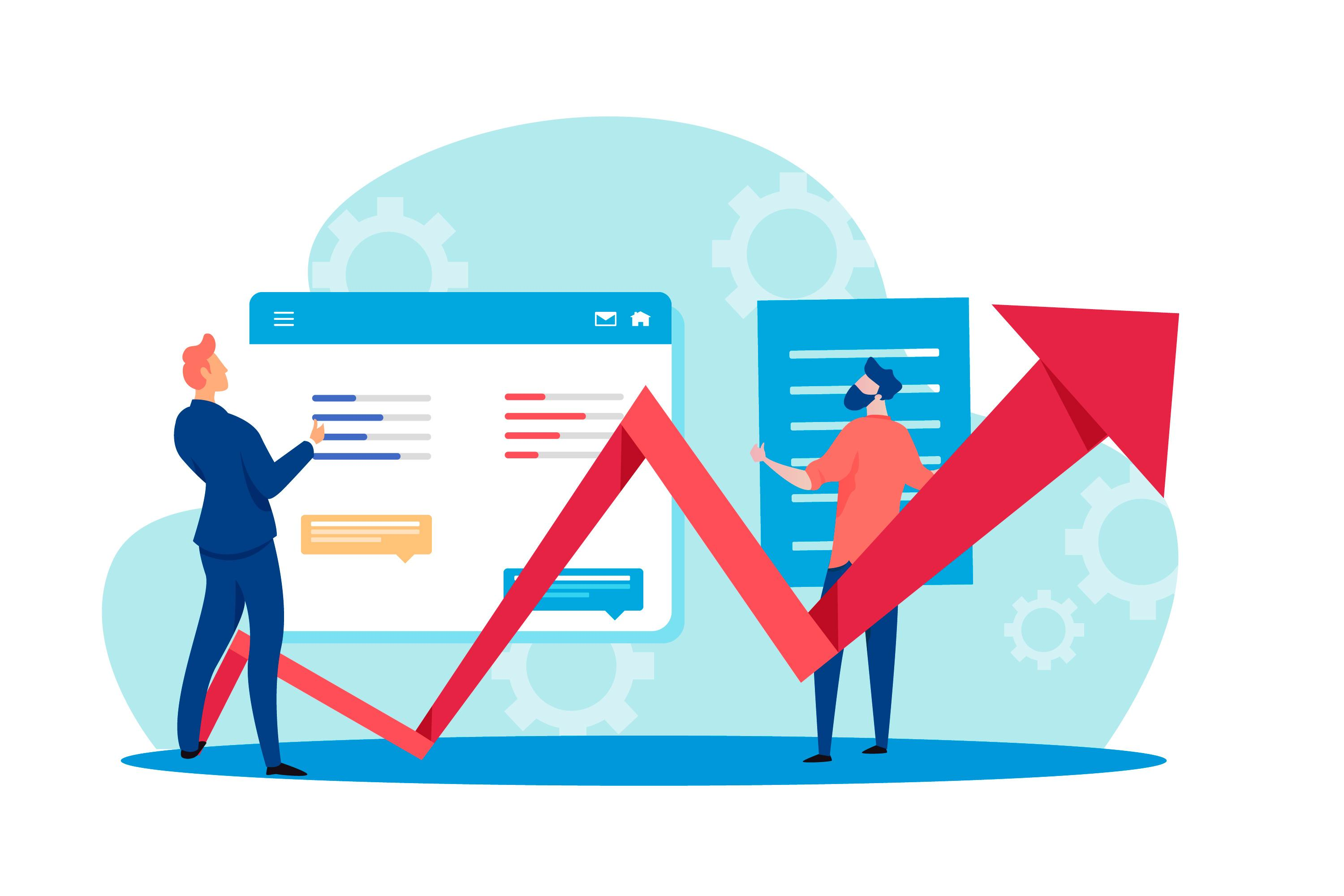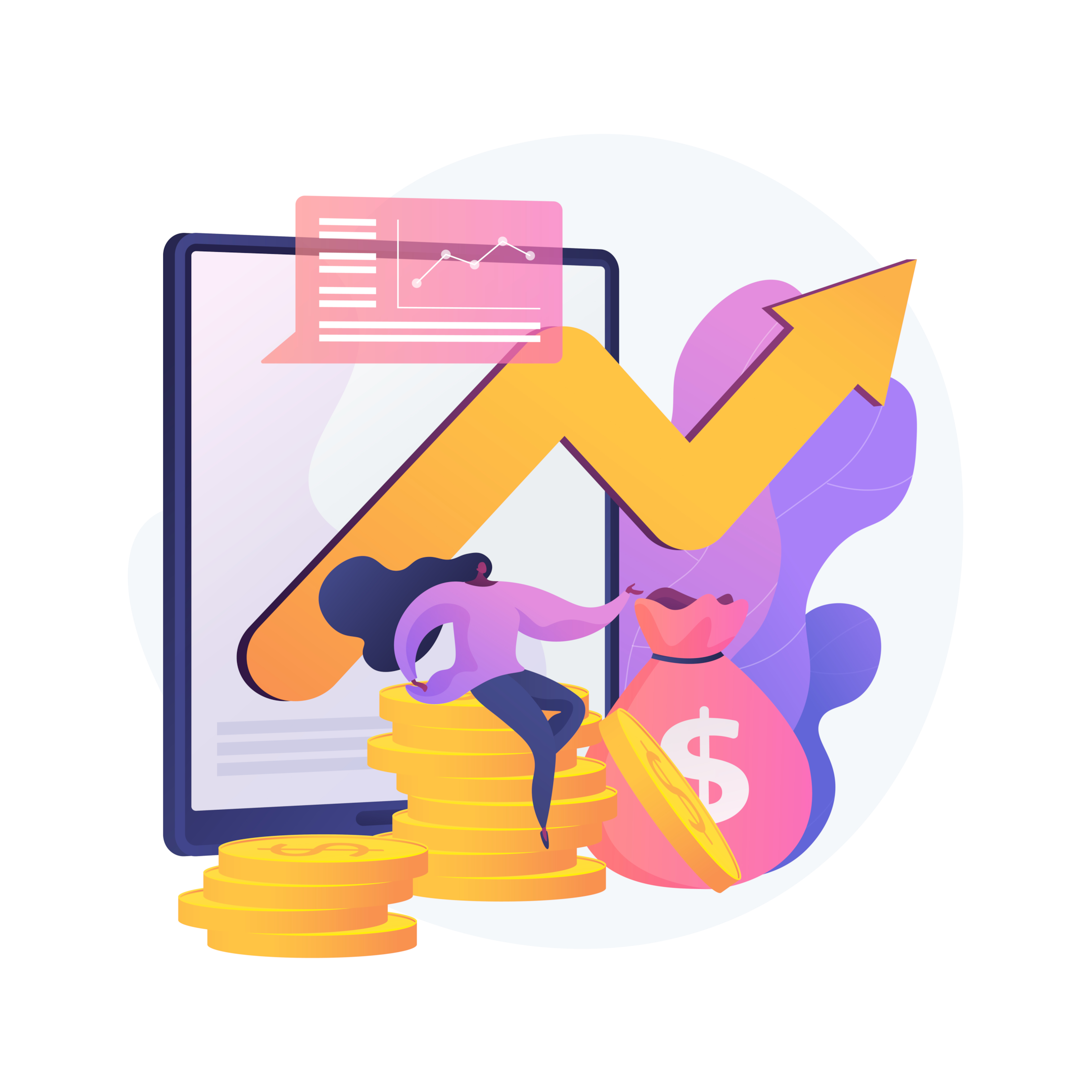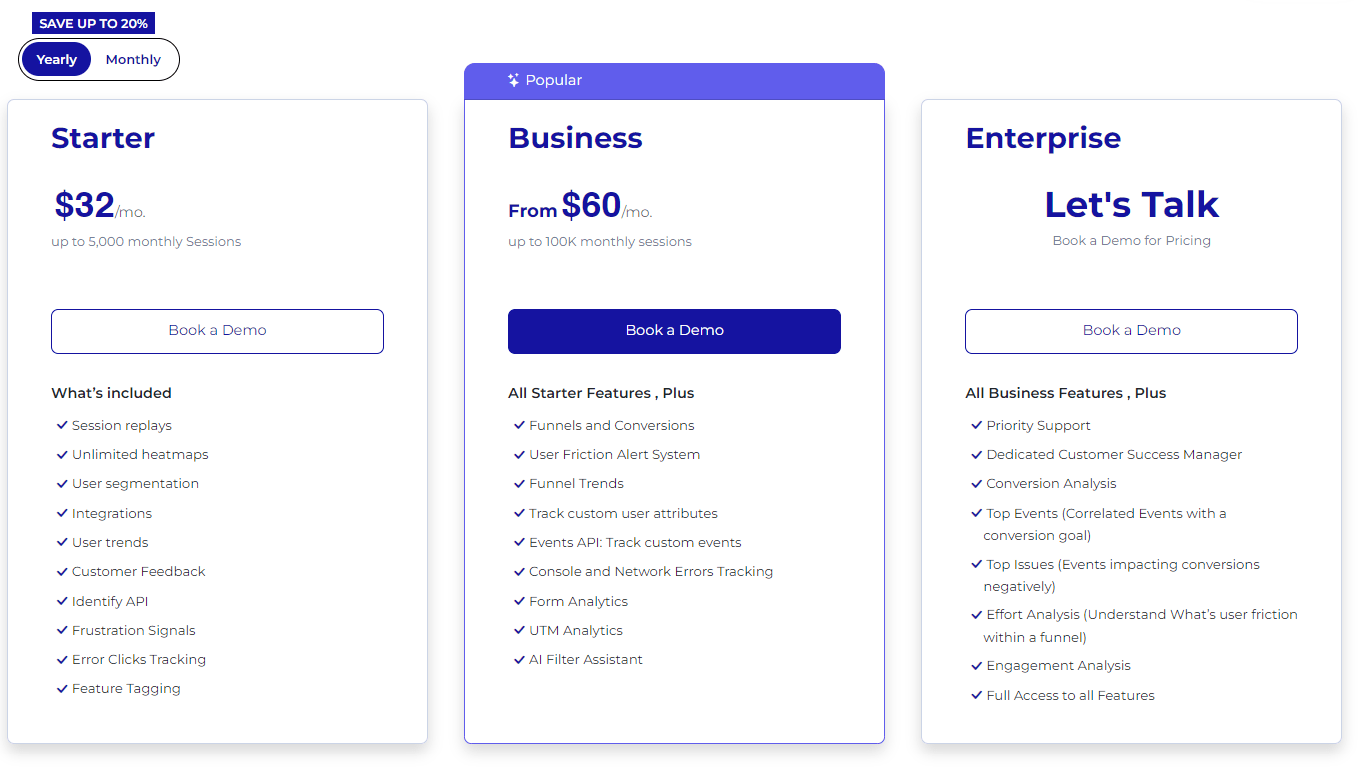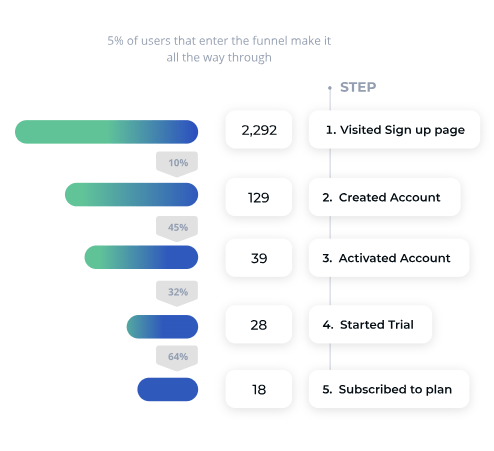Are you looking to optimize your website's performance but unsure if VWO is the right choice? You're in luck! We've compiled...
So, you've driven a sizeable number of visitors to your website. They're looking at your products, perusing your blog pages, and scrolling through your landing page. You might think that the hardest part is over, but unfortunately, you're just now getting to it.
A large number of visitors is meaningless if you can't convert them into paying customers. Luckily, you don't have to go through this grueling process alone. Meet your new best friends: conversion rate optimization tools.
In this guide, you'll get to learn all about conversion rate optimization tools, why they're important, and 11 of the best CRO tools you should add to your toolbelt ASAP.
What is Conversion Rate and Why Is it Important?
Picture this: your website is like hosting a grand event, and to spread the word, you dispatch 100 invitations out into the digital expanse. On the big day, if only 5 out of those 100 invitees step through the door, making a purchase or signing up, your event’s conversion rate clocks in at 5%.
Conceptually, this metric is easy to understand, but it is one of the most crucial metrics to look out for if you want your business to succeed. To put it simply, the conversion rate offers a clear measure of your website's effectiveness in turning website visitors into paying customers.
However, why should the conversion rate command your attention more than the sheer volume of invitations you've sent?
The answer lies in its ability to gauge the success of your digital gathering. A great conversion rate signals that your online party is the place to be, buzzing with activity and engagement. On the other hand, a low conversion rate might indicate it's time to jazz up your invitation strategy or rethink the event's allure altogether.
In other words, your conversion rate tells you if your strategies are working as well as they should or if you need to improve to bring in more customers.
What Are Conversion Rate Optimization Tools?

Conversion rate optimization tools, also known as CRO tools, are designed to identify barriers that prevent visitors from taking desired actions on your website, such as making a purchase, signing up for a newsletter, or filling out a contact form.
They offer valuable insights into user behavior, preferences, and interaction patterns, with user behavior data allowing you to make data-driven decisions to improve the overall user experience and, in turn, your conversion rate.
How Do Conversion Rate Optimization Tools Work?
CRO tools help you identify and fix issues that are preventing you from getting those conversions you want. Sometimes, they do this more directly, such as pinpointing the exact issues on your website. Other times, CRO tools provide more general insights, such as showing you which website version works better.
At a glance, here are several functions of conversion rate optimization software:
- Analyzing User Behavior: Through heatmaps, session recordings, and user interaction analysis, CRO tools give you a visual and quantitative insight into how users navigate your site. You can see what attracts their attention, where they spend most of their time, and where they drop off.
- Testing and Experimentation: A/B testing and multivariate testing features allow you to compare different versions of your web pages to determine which elements perform better in terms of engaging users and encouraging conversions.
- Gathering User Feedback: Direct feedback tools, such as surveys and feedback forms, enable you to collect qualitative data from your users. This direct line of communication helps uncover reasons behind user actions, preferences, and any obstacles they face.
- Enhancing Landing Pages: Specific tools are dedicated to optimizing landing pages, making it easier to create, test, and refine page elements without extensive coding knowledge. These tools focus on maximizing the impact of first impressions and encouraging immediate action.
- SEO and Content Optimization: Some CRO tools offer features to improve your site’s visibility and attractiveness through search engine optimization (SEO) and content effectiveness. This function helps you determine if your marketing content is contributing to conversions.
Types of Conversion Rate Optimization Tools
Choosing the best conversion rate optimization tools is not a one-size-fits-all situation. The types of CRO tools that will work best for your business depend on your current goals, conversion strategies, and, of course, the nature of your business.
Here's a quick run-down of the different types of conversion rate optimization software you may find useful:
- Web Analytics and Conversion Tracking Tools: Conversion rate optimization starts with web analytics. Web analytics tools like Google Analytics and FullSession are crucial in tracking conversion-related metrics, such as the overall conversion rate, the effectiveness of conversion funnels, and customer journey mapping.
- A/B Testing and Experimentation Software: A/B testing will help you understand what web version resonates with your audience. CRO testing tools will allow you to experiment with different versions of web pages, forms, or content to identify which variation achieves higher conversion rates.
- User Behavior Analytics and Heat Mapping Platforms: Behavior analytics tools track user activity, showing you how they navigate your website, which elements they engage with, and where they might encounter issues. Similarly, heat mapping tools offer visual representations of user interactions, such as clicks, scrolls, and mouse movements, identifying areas that attract the most attention and those that may need improvement.
- Customer Feedback Mechanisms: Direct feedback from users can uncover valuable insights into their preferences, pain points, and overall satisfaction. Customer feedback tools can help you collect responses via integrated surveys, polls, and feedback forms on your website.
- Personalization and Targeted Content Delivery: Personalization tools help you tailor content, recommendations, and offers based on individual user behavior, demographics, preferences, or past interactions, all to improve user experience.
- Landing Page Optimization Solutions: Creating and refining landing pages that convert is easier with landing page builder tools. This CRO tool often offers customizable templates, A/B testing capabilities, and seamless integration with analytics platforms.
- Popup and Overlay Creators: Engaging visitors with timely messages and offers can help nudge them towards conversion. Popup builders are designed to capture attention with conversion-focused overlays, such as special promotions or calls to action, at strategic moments in the visitor's journey.
11 Best Conversion Rate Optimization Tools You Should Have in Your Roster

Are your conversion rate optimization efforts not working as well as they should? If so, you might need a little help from some top CRO tools.
As you know by now, optimizing your conversion rate. However, there are dozens of conversion optimization tools on the market today, all with unique offerings and functions. How do you know which ones would work?
Here's a rundown of the best conversion rate optimization tools you should consider:
1. FullSession

FullSession is an intuitive web analytics tool that is designed to help you know and understand your users better. It's an all-in-one software that makes it easy to track user behavior through multiple channels, such as session recordings, interactive heat maps, and integrated customer survey tools.
FullSession is designed to improve your site's conversion rate, ranking top among the best website optimization tools.
Pros
- Easy Integration: FullSession can be easily integrated into most websites without extensive coding knowledge, making it accessible to businesses of all sizes.
- Enhanced User Experience: By identifying usability issues and barriers to conversion, FullSession helps craft a more intuitive and user-friendly website experience.
- Segmentation and Filtering: Users can filter data to analyze specific user groups or behaviors. This feature is handy for tailoring your analysis to particular campaigns, user demographics, or behaviors.
Cons
- Learning Curve: While FullSession is designed to be user-friendly, the span of its features and data can be overwhelming for new users. It may take some time to become proficient in using the platform to its full potential.
- Data Overload: With so much data available, users may find it challenging to identify actionable insights if they don't know what metrics to prioritize.
Install Our Conversion Rate Analytics Tool Today!
It takes less than 5 minutes to set up the best web analytics tools inside your dashboard on FullSession, and it's completely free!
2. Google Analytics
A powerhouse in the realm of web analytics, Google Analytics is indispensable for anyone serious about CRO. It provides comprehensive insights and visual data into user behavior, traffic sources, and conversion paths, allowing you to pinpoint where you need to improve to drive more website conversions.
Pros:
- Comprehensive Data Analysis: Google analytics Offers deep insights into user behavior, traffic sources, and conversion metrics.
- Free to Use: Google Analytics is a free website optimization tool for its basic version.
- Integration: Seamlessly integrates with other Google services and many third-party tools.
Cons:
- Complexity for Beginners: The vast array of features within Google Analytics' visual editor can be overwhelming for new users.
- Data Privacy Concerns: As with any Google product, there are concerns regarding user data privacy and how information is used.
Overall, Google Analytics gives you in-depth insights into your site visitors, conversions, and important quantitative data. And it's a free tool!
3. Optimizely
Optimizely is a popular web analytics tool and our first choice for A/B testing. It helps marketers experiment with different website elements to discover what maximizes user engagement and conversion rates.
Plus, its user-friendly interface and powerful analytics make it a go-to for data-driven decision-making, especially for those without much web development experience.
Pros:
- Ease of Use: Intuitive interface for setting up and running A/B tests without extensive technical knowledge.
- Advanced Targeting: Offers detailed targeting options to run experiments on specific segments of your site visitors.
- Robust Reporting: Provides clear, actionable insights from A/B testing experiments.
Cons:
- Cost: Can be expensive for small businesses or individuals just starting out with optimization.
- Learning Curve: While user-friendly, there’s a learning curve to utilize all its features fully.
4. Unbounce
Unbounce is a leading landing page platform that lets you design, test, and launch landing pages without any need for coding. This conversion tool is a drag-and-drop builder and visual editor, coupled with A/B testing capabilities, which makes it a top CRO tool for creating high-converting landing pages.
Pros:
- Templates: A wide variety of templates tailored for different industries and conversion goals.
- Dynamic Text Replacement: Enhances PPC campaigns by dynamically altering text to match search queries.
Cons:
- Price: Plans can be pricey, especially for startups or small businesses.
- Limited Customization: While there are many templates, customization options can be limited for more advanced users.
5. VWO (Visual Website Optimizer)
VWO offers a wide variety of A/B testing and conversion optimization research tools, which help provide insights into how changes to your website can affect user behavior. Data from VWO can help you identify strategies for incremental improvements, which should ultimately lead to lead generation and better conversions.
Pros:
- Form Analytics: VWO analyzes the performance of your website forms, helping gauge the user experience while filling them out.
- Easy Integration: Easily integrates with other tools and platforms, enhancing its utility.
- Customer Support: Notable for its strong customer service and extensive documentation.
Cons:
- Cost: Pricing can be steep as you scale up in terms of traffic and features needed.
- Complex Features: Some features may require a steep learning curve to use effectively.
6. LeadPages
LeadPages specializes in landing page creation and lead capture solutions. This nifty CRO tool is designed to help you quickly build and deploy landing pages that convert, with easy integrations into email marketing and CRM platforms.
Pros:
- High-Converting Templates: Offers a wide selection of templates designed to maximize conversions.
- Lead Capture Tools: Built-in tools for capturing leads directly from landing pages.
- Ease of Use: User-friendly interface suitable for non-technical users.
Cons:
- Limited Customization: Advanced users may find the customization options too basic.
- Page Loading Speed: Some users report slow loading speeds for pages created with LeadPages.
7. SEMRush
While primarily an SEO tool, SEMRush offers features beneficial for CRO, including site audits to see website traffic and examine user flow. SEMRush identifies technical issues that might be hindering your conversion rate and content analytics, which can help you gauge how your content performs in lead generation and driving conversions.
Pros:
- SEO Integration: Offers tools for optimizing conversion rate alongside SEO efforts. Using SEMRush helps you focus individually on SEO for lead generation.
- Comprehensive Toolkit: Includes features for site audit, competitor analysis, and more.
- Content Marketing Tools: Provides insights into content performance and user engagement.
Cons:
- Overwhelming for Beginners: The wide array of features can be daunting for new users.
- Cost: The subscription can be expensive for small businesses or freelancers.
8. ConvertKit
Personalization is one of the best conversion rate optimization strategies, but it can be tedious without automation.
ConvertKit is an email marketing tool that comes out on top in automation and segmentation, allowing you to send targeted messages to different segments of your audience. This personalization can significantly increase engagement and conversions from your email campaigns.
Pros:
- Segmentation and Personalization: Excellent tools for targeting specific audience segments.
- User-Friendly: Designed with bloggers and creatives in mind, making it easy to use.
- Automation: Robust automation capabilities for personalized email campaigns.
Cons:
- Limited Design Options: The email templates and design options are relatively basic.
- Price: While it offers a free plan, advanced features require a paid subscription.
9. Hello Bar
Hello Bar is a conversion rate optimization tool designed to grab visitors' attention with customizable, targeted messages and chat tools. Whether it’s gathering email addresses or directing users to a landing page, Hello Bar can help increase website conversion rates with minimal effort.
Pros:
- Simplicity: Easy to set up and use for creating engaging pop-ups and headers.
- Customization: Offers a decent level of customization for messages and calls to action.
- Integration: Easily integrates with other marketing tools and platforms.
Cons:
- Limited Features on Free Plan: The free version is quite limited in functionality.
- Can Be Intrusive: If not used sparingly, pop-ups can detract from the user experience.
10. Kissmetrics
Kissmetrics provides deep insights into user behavior and conversion tracking. With its focus on analytics and user engagement, it helps you understand the entire customer journey, from first interaction to conversion, allowing for targeted improvements.
Pros:
- Deep Behavioral Insights: Tracks and analyzes individual user behavior over time.
- Segmentation: Allows for detailed segmentation of your audience for targeted analysis.
- Integration: Offers strong integration options with other marketing tools.
Cons:
- Pricing: The cost can be high for small businesses or startups.
- Complexity: The depth of features comes with a learning curve to fully leverage its capabilities.
11. Instapage
Instapage stands out for its advanced landing page platform that emphasizes personalization and performance. With features like heatmaps, A/B testing, and AdMap for matching ads to relevant landing pages, it’s a powerful tool for maximizing ROI on ad spend and improving conversion rates.
Pros:
- Personalization: Offers advanced personalization features for landing pages.
- Optimization Tools: Includes heatmaps, A/B testing, and more for optimizing pages.
- Ease of Use: Intuitive design interface that doesn’t require coding skills.
Cons:
- Cost: Higher pricing compared to some other landing page builders.
- Features vs. Price: Some users feel the cost is not justified by the features offered, especially for smaller traffic volumes.
Conversion Rate Optimization Doesn't Have to Be Complicated

Conversion rate optimization is just a fancy term for improving your conversion rate in any way possible, so don't get overwhelmed. With these insights and CRO tools at your disposal, you can start identifying and tracking key performance indicators that will ultimately lead you to an optimal conversion rate.
Not sure what CRO tool to get? Don't worry, we get it. If you want to start with something simple yet extremely value-adding, add FullSession to your roster of web analytics tools.
With FullSession, you get access to:
- Session recordings and replays: Watch how your website visitors navigate your site and identify potential issues that may be blocking conversions, and overall improve customer experience.
- Interactive heat maps: Get a visual on what elements your audience is paying attention to vs. which ones they are ignoring (a.k.a. elements you need to improve).
- Customer feedback tools: Create feedback forms, and gain insights for conversion rate optimization directly from the people you want to convert: website visitors and prospects. Ask things such as open-ended questions to learn exactly how your target market feels about what you offer.
FullSession Pricing Plans

The FullSession platform offers a 14-day free trial. It provides two paid plans—Basic and Business. Here are more details on each plan.
- The Starter plan costs $39/month or $32/year and allows you to monitor up to 5,000 monthly sessions with up to 6 months of data storage.
- The Business plan costs $75/month or $60/year and helps you to track and analyze up to 100,000 monthly sessions with up to 12 months of data storage.
- The Enterprise plan has custom pricing and offers customizable sessions plus full access to all features.
FAQs About Conversion Rate Optimization Tools
Can I use multiple CRO tools at once?
Absolutely! In fact, using a combination of tools can give you a more comprehensive view of how to optimize your conversions.
Is CRO only for e-commerce sites?
No way! Any website aiming to achieve a specific action from its visitors, be it signing up for a newsletter or downloading a white paper, can benefit from CRO.
How often should I analyze my conversion rate?
Regularly! Conversion rates can fluctuate due to various factors, so it's crucial to keep an eye on them and adjust your strategy accordingly.





